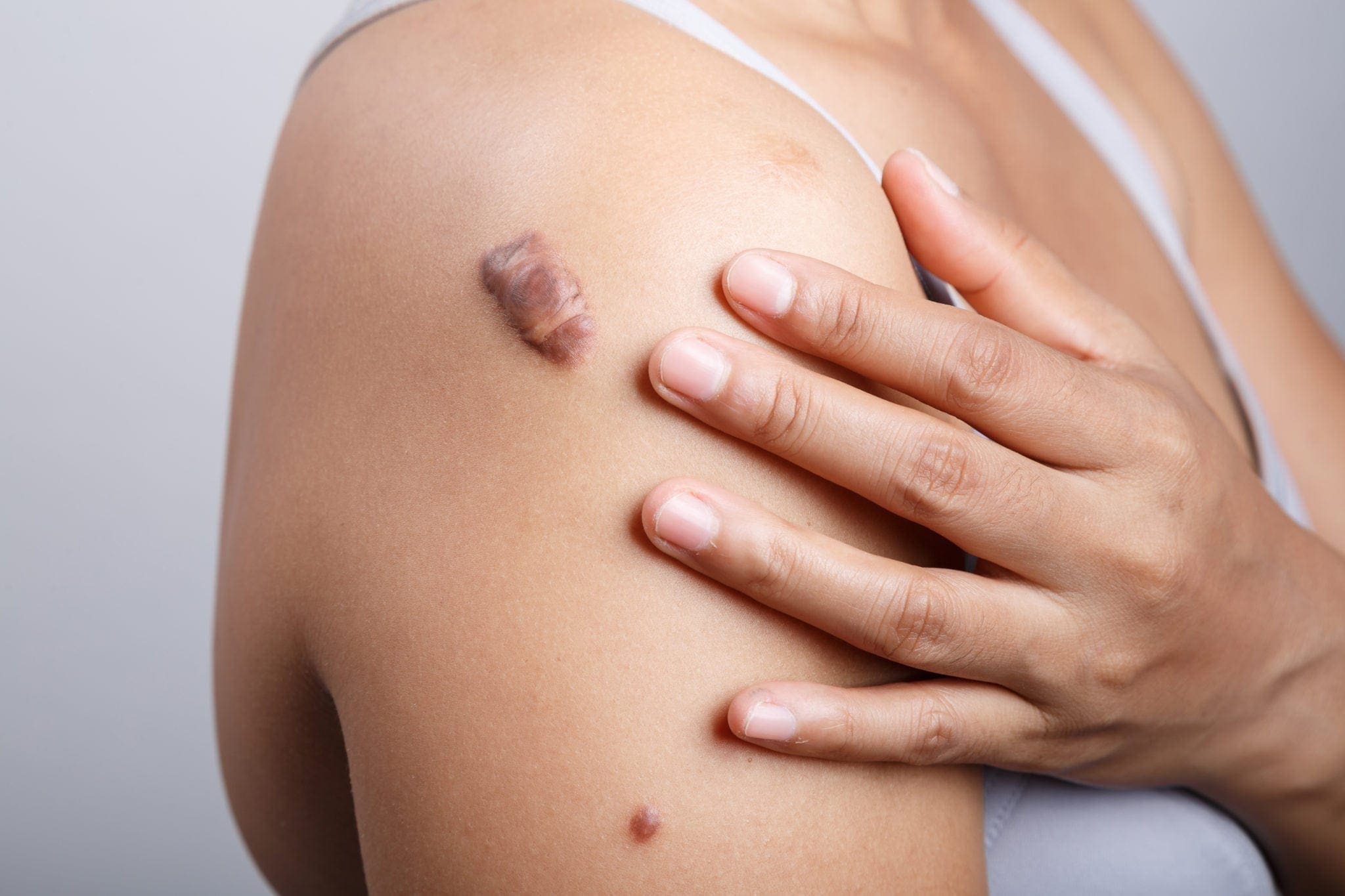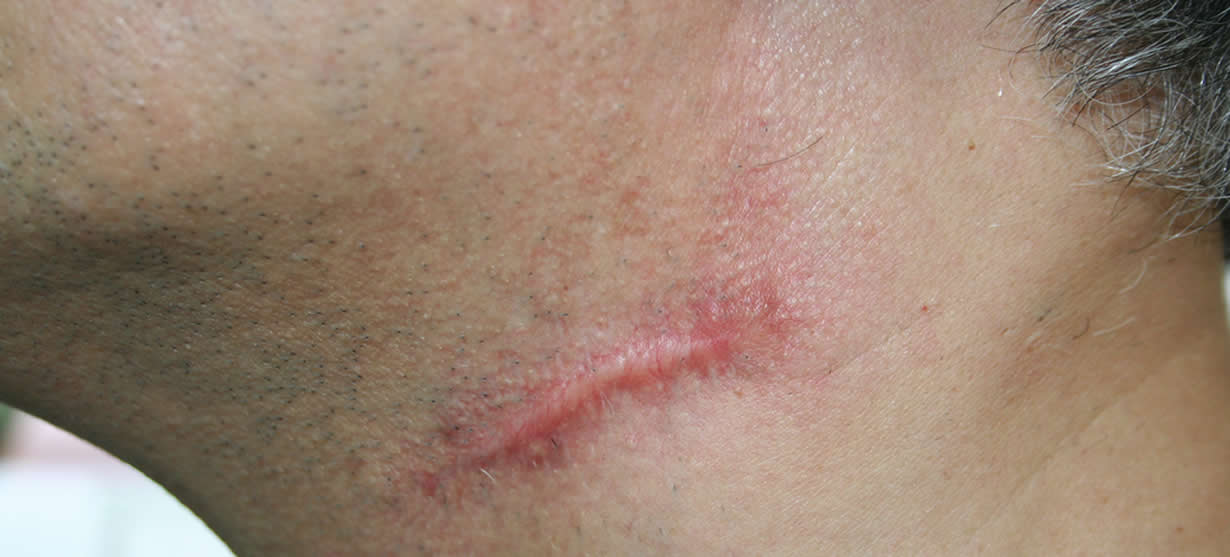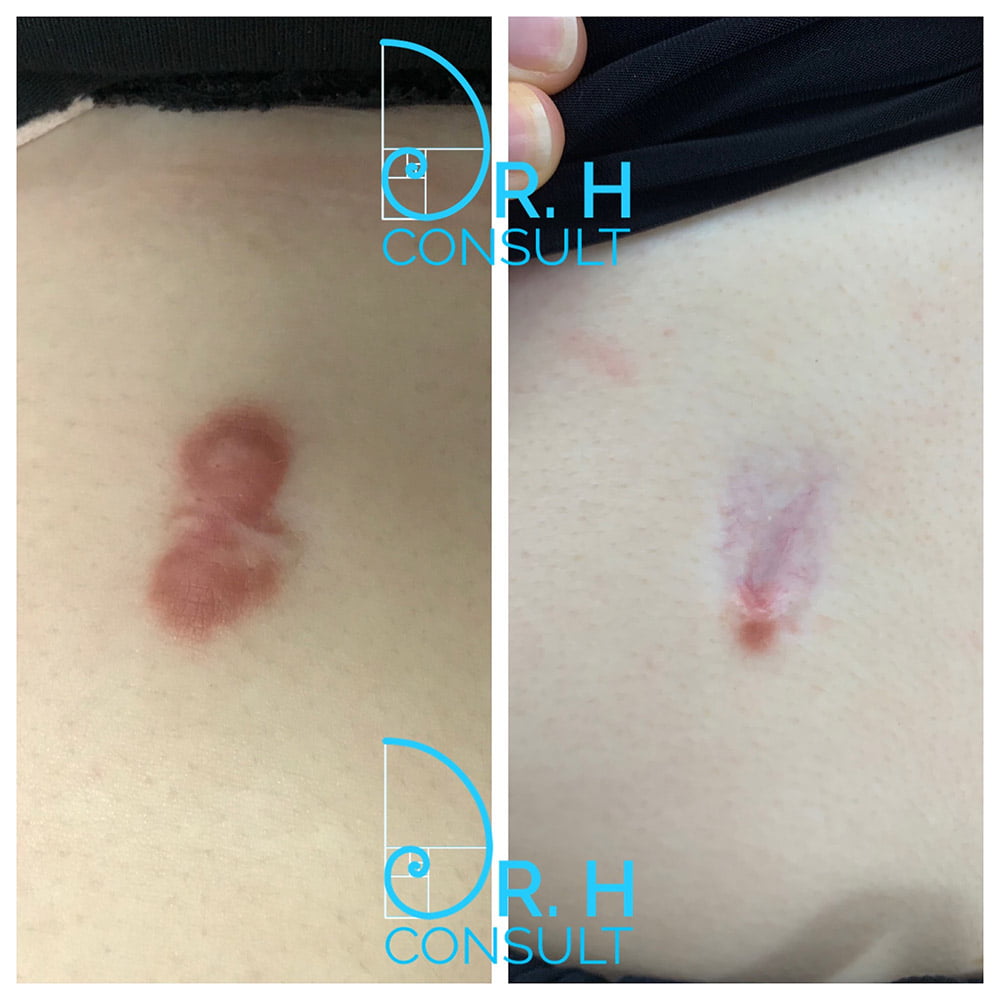They can also be tender to the touch itchy and sometimes painful. Cortisone injections can treat keloids in four to eight weeks and can be a safe option that is not very painful.

Treatment Of Keloid Scars With Intralesional Triamcinolone And 5 Fluorouracil Injections A Randomized Controlled Trial Journal Of Plastic Reconstructive Aesthetic Surgery
To reduce the risk of a keloid returning after surgical removal dermatologists often treat patients with another keloid treatment after the surgery.

How to treat painful keloid scars. Silicone sheeting or gel. Cutting a keloid can make it spread even farther so this may be a last resort option. On a histological level keloids are composed of thick and abundant collagen bundles that form lumps deep within the scar.
As its name this surgery is done to remove the unwanted keloid scar by cutting it away. Freezing early keloid scars with liquid nitrogen to stop them growing laser treatment to reduce redness but this will not make the scar any smaller surgery sometimes followed by radiotherapy to remove the scar although it can grow back and may be larger than before. This can help flatten the keloid.
How to treat keloid scars. Wearing silicone sheets or gel over the scar. The best way to minimize the symptoms of keloids such as itching burning or pain is to inject them with either cortisone or 5-FU.
The over production of collagen is what leads to hypertrophic scars. Injections of corticosteroids such as triamcinolone acetonide can help reduce the size of the keloid scar when applied at an interval of around 4 weeks. This procedure has a risk.
It also can fade the color. It works best on small keloids. The medicine in these shots helps shrink the scar.
Injections of 5-FU and cortisone will reduce size and symptoms of painful keloid scars. Research found that aspirin prevents scar-promoting cells from entering the keloid site when. Even with optimal treatment recurrence can occur sometimes even years after treatment.
Silicone has a low risk of adverse effects and. This treatment resurfaces the keloid. Surgical methods are used when the scar becomes way too large or if the keloid keeps coming back after being treated.
Treatment options for keloids. Keloid scars should be treated in a specialist setting in order to reach satisfactory outcomes. Injections of 5-FU and cortisone will reduce size and symptoms of painful keloid scars.
The result of this anomaly is a raised scar like a keloid scar. Research suggests that it can be more helpful on newer keloids or following surgical removal of the scar. Surgery and postoperative radiotherapy.
1 person found this helpful Benjamin Barankin MD FRCPC. Steroidal anti-inflammatory injections can be used as treatment. Injections of corticosteroids or cryotherapy may help reduce the risk.
This can help flatten the keloid. Speak to your dermatologist about your best treatment options. Silicone is one of the most widely used scar remedies and it has been proven to help shrink some raised and keloid scars.
Here are the available treatments for keloid scars. Also very popular are the injections of the chemical called fluorouracil and of the protein called interferon. A 2013 review and a 2015 study suggest that the topical use of aspirin pills may help treat keloids.
It does show some improvement in keloid appearance. Keloids are unfortunately one of the trickiest conditions to treat successfully as no treatment has been shown to be 100 effective at permanently getting rid of them. Surgery is often required for larger keloids but may pose a risk to the patient.
These injections may be mildly painful and the treated area may still have some marks remaining. If the keloid is on an earlobe wearing a special earring that puts pressure on the earlobe can prevent the keloid from returning. Laser treatment for keloids For certain types of scars including some keloids your doctor may recommend laser treatment.
The medication dissolve much of the fiber in the scars and soften the. The keloid scar may regrow but another treatment such as steroid injection can prevent this possibility. Called cryotherapy this can be used to reduce the hardness and size of the keloid.
Inflammatory keloids are often seen in chest wall and are best treated with chemotherapy injections Management of this keloids is quite challenging. The management options can be divided into those that aim to. A Remove the keloid lesion and replace it with a flat symptom-free scar.
Besides the injections one could treat the keloids by applying the pads filled with the silicone gel over them or by using the homeopathy as the therapy.

How To Get Rid Of Keloids Treatment Familydoctor Org

Keloid Scar Removal Keloid Treatment Dr Walayat Hussain
Treatment Of Keloids And Scars Globehealer

Keloid Scars Causes Treatment Prevention Youtube

Keloid Removal Don T Let Keloids Scar Your Skin And Your Confidence Hk Dermatology Dermatology Clinic

Pre Sternal Keloid Scar In A 45 Year Old Man Treated With Deprodone Download Scientific Diagram

Keloid Scar Treatment Removal London Surrey Dr H Consult

Treatment For Keloid Scars Goes Painless

0 comments:
Post a Comment